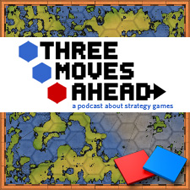The strategy genre has not made much of a dent in the console world. Though older classics like Age of Empires and Europa Universalis are now finding their way to handhelds, console strategy has, for the most part, been left to planning out your franchise moves in a sports game or choosing which card to play in Yu-Gi-Oh. That seems to be changing, with a number of new strategy games on the horizon for the PS2.
One consistend exception has been the Romance of the Three Kingdoms series. KOEI has been making these epic strategy/role-playing games since the late eighties. The original could be played on the NES. The new one, now number ten, is for the PS2 (as were seven, eight and nine) and it is getting rave reviews.
There was a time when KOEI made games for the PC. The games were, in many ways, precursors to the Total War series. Your leaders are much more important than they are in the Creative Assembly games, and you, as the player, take on a specific character and not a nation or faction. This means that there is a role-playing element beyond the simple conquer-thy-neighbor mechanic.
As a console-less person, I can only rely on the word of people whose opinion I trust. And they tell me that RoTK X is a great game. There has been some discussion of whether or not KOEI should try its hand at a Western historical theme. In their PC days, they took on Napoleon and the American Revolution, but have stuck with the great Chinese sagas for the most part.
Here in the US, certain historical subjects sell better than others and certain play styles sell better than others. Though a new KOEI game based on the Revolutionary war or the time of the conquistadors might sell better than the unification of China, it is often the battles themselves that seem to fascinate American history gamers. There are exponentially more games, for example, on individual Civil War battles than there are grand strategic games on the war. (This mindset could explain the durability of homemade war games and the comparative dearth of larger strategy titles.)
I just wish they would publish this game for the PC. I suppose that I can get a PS2 cheap in a year or so. Until then, I guess I’ll just cede this one piece of gold to my strategy deprived console brethren. After action reports and further comments welcome in the comment section, as usual.

